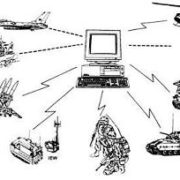Check out this amazing video of a hummingbird UAV from AeroVironment Inc.
This speedy, little UAV illustrates several significant trends in unmanned systems:
- Robots are getting smaller.
- This UAV’s reported flight time of 8 minutes (Hummingbird UAV flies by flapping its wings) illustrates problems of powering small unmanned systems.
- If you want your UAV mentioned in a blog, get an awesome video.
- Frank Herbert’s description of ornithopters in the classic Dune was predictive.
The last point really isn’t true. The above referenced article in the New Scientist states “At very small scales, the Reynolds number of a wing (the ratio of inertia to drag) is much lower than with manned aircraft. Under these circumstances flapping wings are more effective at providing lift than propellers or rotors.”
So, flapping wings is just for the small fry. Sorry, Frank. You’ll have to settle for being a Science Fiction icon, instead of a visionary prophet.
The fact that robots are getting smaller, and will get even smaller is incontestably true. This blog discussed it in Robots shrink as their budgets grow. An article on AMREL’s OCU site, Don’t believe the bunny: Power & Unmanned Systems, reports “Some analysts say that Micro Air Vehicles (MAV) are the wave of the future, because Integrated Air Defenses (IAD) have made expensive large-fame vehicles like the Predator vulnerable. Cheaper, lower profile MAVs are more expendable and therefore more practical.”
However, how much can a MAV accomplish in 8 minutes? Sure, an 8 minute flight time would be totally adequate in some tactical scenarios, but clearly this limits mission flexibility.
Small form-factor robots don’t have much room for batteries or other sources of energy. Considering that the batteries in the famous drumming bunny only last about 3 to 4 minutes, the 8 minute flight time of the hyper-energetic hummingbird UAV is pretty impressive.
Batteries continue to be the great underachievers of modern technology. Their poor performance acts as a bottleneck for MAVs, renewable energy and many other applications. With so many devices dependent on batteries, eventually, someone will find a way of making them more practical.
When that technological breakthrough happens, I hope it has a cool video.



